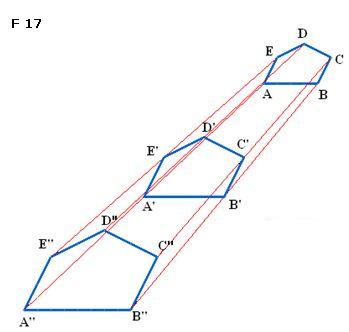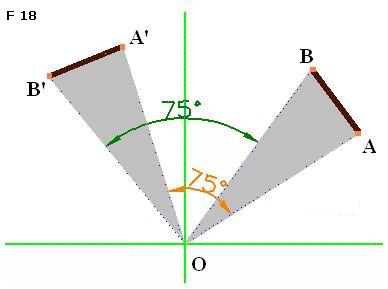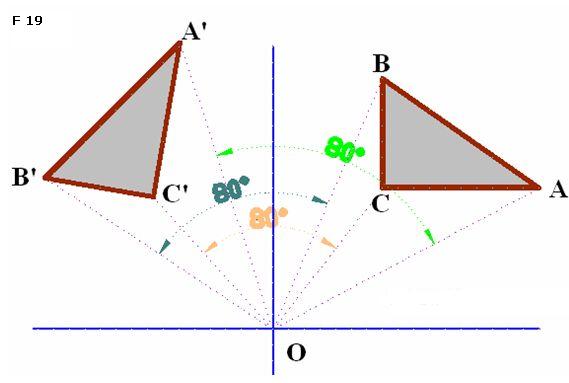SIMILAR SHAPES.
Similar shapes are those shapes which have the same form but different sizes. Shapes whose sides are composed by parallel lines are also similar shapes. In F 17, we have three similar shapes. As you can see, they have the same form but different sizes.

EQUIVALENT OR COUNTERPART SIDES:
In similar shapes, corresponding sides are called equivalent or counterpart sides. The side or point which occupies the same position in another shape is called equivalent or counterpart. Side AB (F 17) is an equivalent or a counterpart of side A’B’ (they occupy the same place in another shape) and it is also an equivalent or a counterpart of side A’’B’’ (they also occupy the same place). We can say the same with side BC with B’C’ and B’’C’, CD with C’D’ and C’’D’’, and so on with all the other sides.
COUNTERPART SHAPES THROUGH ROTATIONS:
In F 18, we have segment AB which has rotated 75º around point O (also the origin of the coordinate axis). Points A and B are equivalent to A’ and B’ since they occupy the same place.
In the same image, we have filled (in gray) the interior space formed by lines starting from A, B, A’ and B’ join with O; common point for both triangles.

In F 19, we have triangle ABC which after a rotation of 80º has transformed into triangle A’B’C’ (we can prove the rotation of each one of its vertices). We can see that the counterpart sides of both triangles are equivalent. If their sides are equivalent, so will their angles be. Triangle A’B’C’ is the counterpart of triangle ABC

COUNTERPART CIRCUMFERENCES:
A circumference with centre in C and a radius r has rotated 106º around O.
A circumference with centre in C’and a radius r’ is its counterpart since both their radius are equal.
The circumference with centre in C’ is located at another place (106º positive) from the one which has a centre in C.